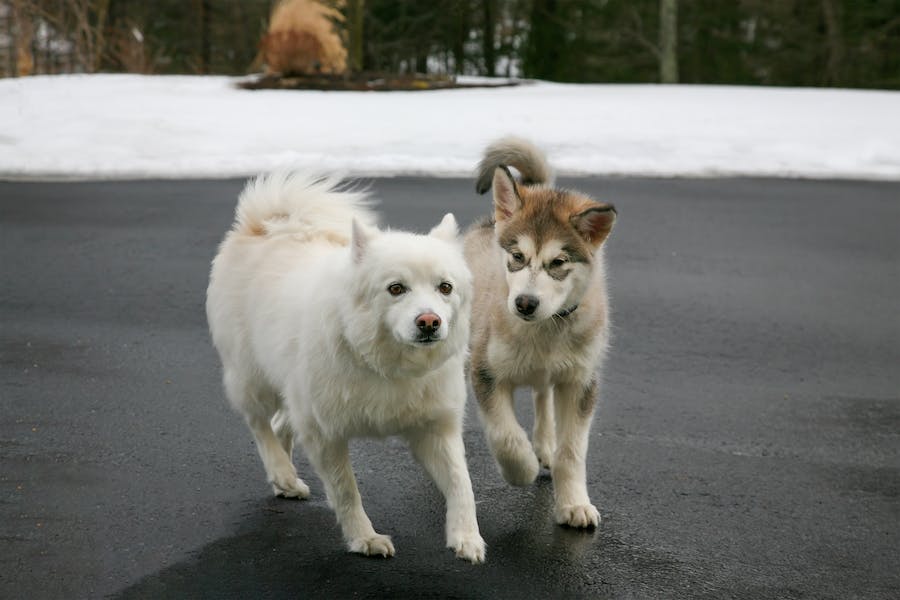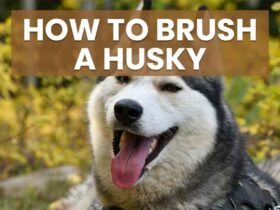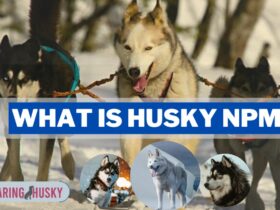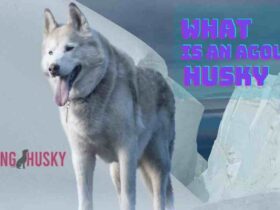With their striking blue eyes and thick fur coats, Huskies are one of the world’s most recognizable and admired dog breeds. Known for their role as sled dogs in cold climates, they have a rich history that shapes their unique characteristics. This article delves into the intriguing question of whether Huskies are as independent as they are often perceived. By exploring their historical background behavioral traits, and comparing them to other breeds, we aim to understand the true nature of Husky independence. This exploration is crucial for current or prospective Husky owners and offers fascinating insights into the broader understanding of canine behavior and temperament.
Are Huskies Independent?
Yes, Huskies are known for their independent nature. This trait stems from their history as sled dogs, requiring them to make decisions and work semi-autonomously in challenging Arctic environments. Huskies are intelligent curious, and often have their agenda, which can sometimes be mistaken for stubbornness. Their independence means they may only sometimes seek constant attention or approval from their owners, unlike more dependent breeds. However, it’s important to note that this independence doesn’t diminish their loyalty or affection towards their family. Understanding and respecting their independent streak is vital to a harmonious relationship with a Husky.
Historical Background Of Huskies
The historical background of Huskies is a tapestry woven with endurance, versatility, and a solid connection to cold climates. Understanding their past helps in comprehending their independent nature:
Huskies originated among the Chukchi people of Northeastern Asia. Bred for thousands of years by these semi-nomadic tribes, Huskies were used as sled dogs and family companions. The Chukchi valued Huskies for their speed and endurance in harsh Arctic conditions, a testament to their resilience and adaptability.
In the early 20th century, Huskies were introduced to Alaska during the Gold Rush. They quickly became essential for transportation across the snowy terrain, especially in areas inaccessible by other modes of travel. Their role in the 1925 serum run to Nome, where they delivered life-saving diphtheria antitoxin over nearly 700 miles of icy wilderness, is a legendary example of their endurance and reliability.
The term “Husky” actually refers to several breeds, including the Siberian Husky, Alaskan Husky, and Malamute. Each breed has distinct characteristics but shares common traits like a thick double coat, erect ears, and a wolf-like appearance. The Siberian Husky, recognized by the American Kennel Club in 1930, is the most well-known among them.
Huskies are renowned for their ability to withstand frigid temperatures, a trait honed over centuries of living in Arctic conditions. This adaptability extends to their diet and metabolism, efficiently converting food into energy.
While Huskies still serve as working dogs in some regions, they have become popular as companion animals worldwide. Their friendly demeanor, striking appearance, and playful nature have contributed to their popularity.
The historical roles of Huskies required them to be quick-thinking and capable of making decisions in critical situations, contributing to their independent nature. They were often left to roam and hunt, fostering a strong sense of self-reliance.
Defining Independence In Dogs
Defining independence in dogs involves understanding behaviors and traits that distinguish independent dogs from their more dependent counterparts. This concept is crucial in canine psychology and how we interact with furry companions.
Behavioral Traits of Independent Dogs: Independent dogs often show self-reliance in their actions. They are comfortable being alone for extended periods, show less anxiety when separated from their owners, and often engage in self-entertaining activities. Such dogs may not constantly seek attention or approval from their human companions and are usually less responsive to commands or cues.
Training and Obedience: An independent dog might not be as eager to please as other breeds, which can pose unique challenges in training. They often require more patience and innovative training techniques, as they might respond differently to traditional methods focused on obedience and submission.
Socialization and Interaction: While independent dogs can be affectionate, they may not require or desire constant social interaction. They tend to be more selective in their interactions with both humans and other animals, often choosing when and how they engage.
Exploration and Curiosity: Independence in dogs is also characterized by a strong sense of exploration and curiosity. These dogs might explore their environment more autonomously, often without seeking constant guidance or reassurance from their owners.
Problem-Solving Skills: Independent dogs are typically good problem-solvers. They can often figure out things independently, a trait harnessed in various working roles for dogs, like search and rescue or herding.
Misconceptions: It’s important to note that independence doesn’t equate to disobedience or lack of affection. Independent dogs can form strong bonds with their owners but express affection and loyalty differently than more dependent breeds.
Huskies Compared To Other Breeds
When comparing Huskies to other dog breeds, their unique traits highlight their distinctiveness and the reasons behind their popularity. Huskies are often juxtaposed with other breeds to understand their temperament and behavior better.
Comparison with Independent Breeds:
Huskies share traits with independent breeds like the Shiba Inu, Akita, and Chow Chow. These breeds, known for their strong-willed nature, also exhibit self-reliance, like Huskies. However, Huskies tend to be more social and outgoing than these breeds, who can be more aloof and reserved with strangers.
Contrast with Dependent Breeds:
In contrast to breeds like Labrador Retrievers or Golden Retrievers, known for their eagerness to please and dependency on human interaction, Huskies are more self-contained. While Labs and Goldens thrive on constant companionship and are highly trainable, Huskies enjoy independence and may not seek human approval as diligently.
Energy Levels and Exercise Needs:
Huskies are high-energy dogs akin to breeds like Border Collies and Australian Shepherds. However, their energy is often channeled differently. While Border Collies and Australian Shepherds are focused and excel in tasks and agility, Huskies display their energy in a more free-spirited way, often enjoying long runs and exploratory activities.
Intelligence and Trainability:
Huskies are intelligent, much like German Shepherds and Poodles, but their intelligence is often characterized by independence rather than obedience. This trait can make training more challenging, as Huskies might not be as immediately responsive to commands as German Shepherds or Poodles, who excel in obedience and task-based training.
Climate Adaptation:
Huskies are unique in their adaptation to cold climates, with a thick double coat that sets them apart from most breeds. This feature makes them more suited to colder environments, unlike short-haired breeds like Greyhounds or Boxers, which prefer milder temperatures.
Social Behavior:
Regarding social behavior, Huskies are generally friendly and good-natured, similar to breeds like Beagles and Irish Setters. However, Huskies have a stronger prey drive, which can affect their interactions with smaller animals, unlike the typically gentle-natured Beagle.
Tips For Managing Their Independent Nature
Managing the independent nature of Huskies can be both challenging and rewarding. Here are some practical tips to effectively handle their unique temperament:
- Consistent Training: Establish clear and consistent rules from the start. Huskies respond well to positive reinforcement techniques. Be patient and persistent, as their independent nature might make them less immediately responsive to commands.
- Mental Stimulation: Keep their minds engaged. Huskies are intelligent and need regular mental stimulation to prevent boredom, which can lead to destructive behavior. Puzzle toys, scent games, and obedience training can be very effective.
- Regular Exercise: Ensure they get plenty of physical exercise. Huskies are high-energy dogs that thrive on activities like running, hiking, and playing. Adequate exercise helps to manage their energy levels and curb any unwanted behaviors stemming from restlessness.
- Socialization: Socialize your Husky from an early age. Exposure to different people, pets, and environments can help moderate their independent streak, making them more adaptable and well-behaved.
- Firm, Gentle Leadership: Be a calm and assertive leader. Huskies respect firm but gentle leadership. Avoid harsh methods, as they can lead to stubbornness or anxiety. Instead, focus on building trust and mutual respect.
- Structured Environment: Create a structured environment. Routine and boundaries make Husky feel secure and understand what is expected of them. This can reduce anxiety-driven independence.
Conclusion
Huskies are a unique and captivating breed renowned for their independence, intelligence, and playful spirit. While their independent nature can present training challenges, it also contributes to their charm and resilience. A Husky can be a loyal, loving, and endlessly fascinating companion for those willing to understand and embrace these traits. Their rich history as sled dogs has endowed them with a remarkable blend of self-reliance and sociability, making them not just pets but truly dynamic members of any family.
FAQ’s
Q. Is a 30-minute walk enough for a Husky?
A. No, more than a 30-minute walk is typically required for a Husky. As a high-energy breed originally bred for endurance sled pulling, Huskies require more extensive exercise to meet their physical and mental needs. They thrive on longer, more vigorous activities such as running, hiking, or extended playtime. A combination of physical exercise and mental stimulation is recommended daily for a Husky’s well-being.
Q. Is it difficult to keep a husky?
A. Keeping a Husky can be challenging due to their high energy, intelligence, and independence. They require regular, vigorous exercise, consistent training, and mental stimulation. Understanding and patience are crucial to managing their unique traits effectively.
Q. Do Huskies like to sleep with their owners?
A. Huskies vary in their preference for sleeping with their owners. Some may enjoy the closeness, while others prefer their own space. It largely depends on the individual dog’s personality and bonding with its owner.







Leave a Reply